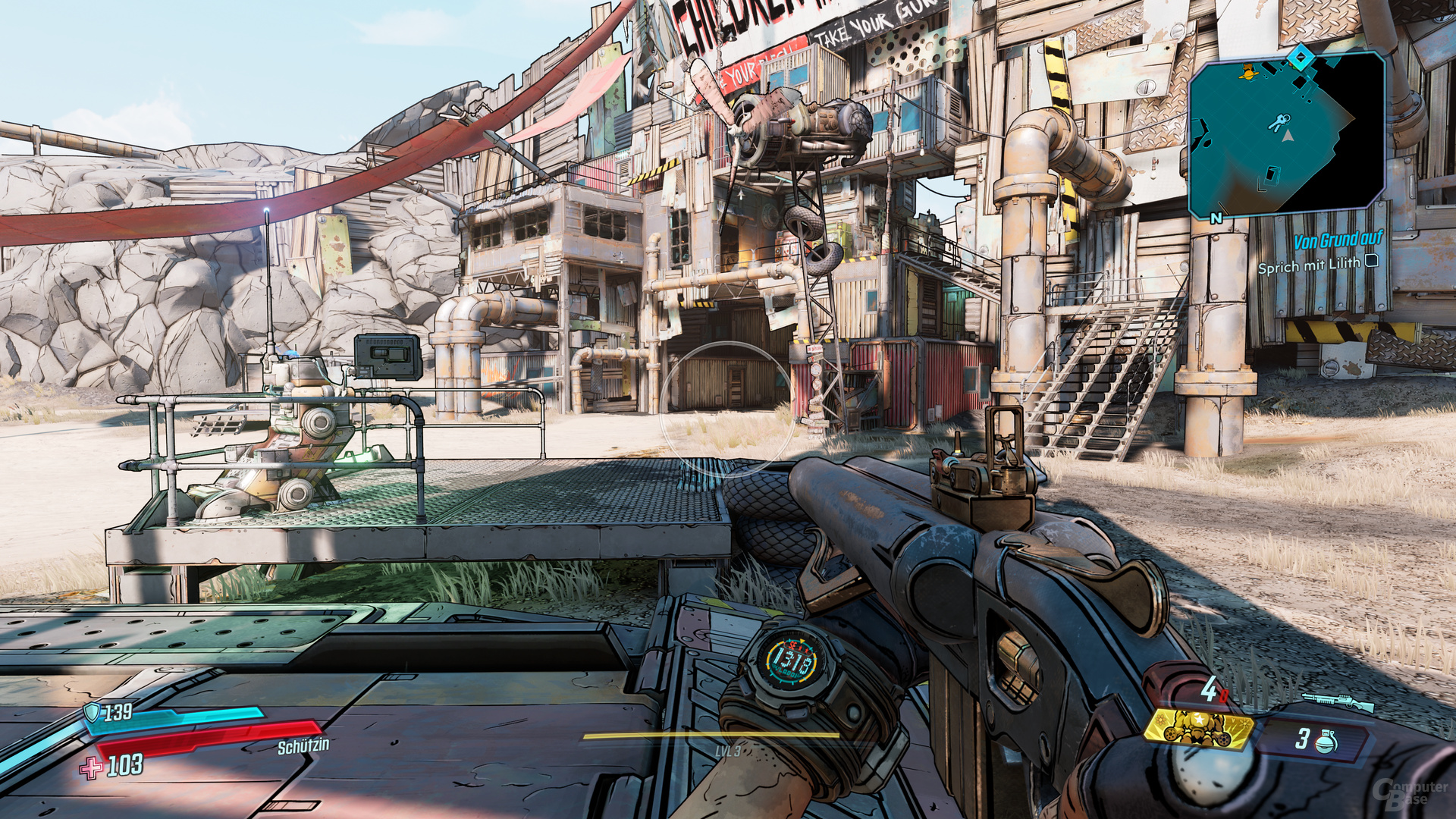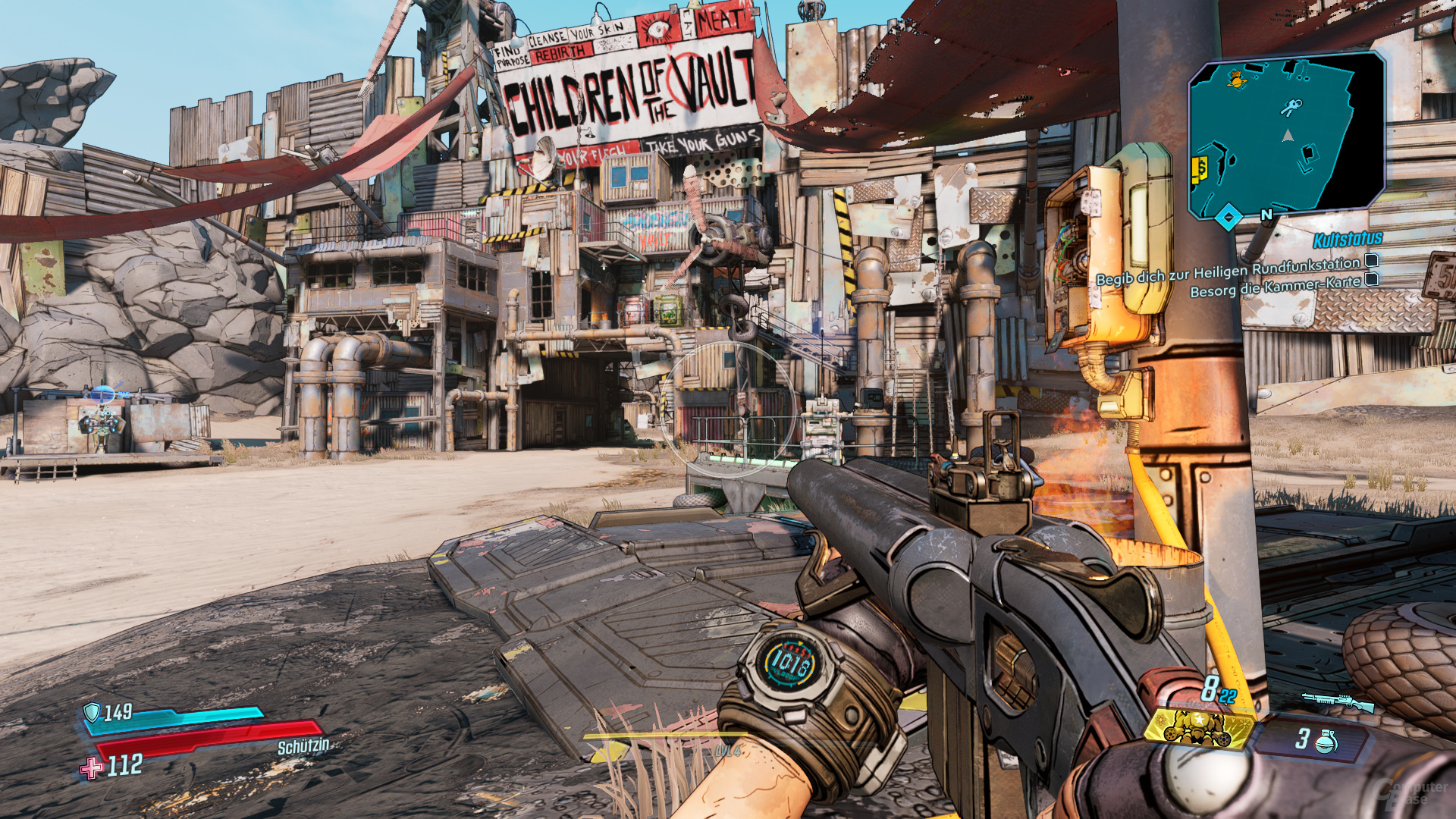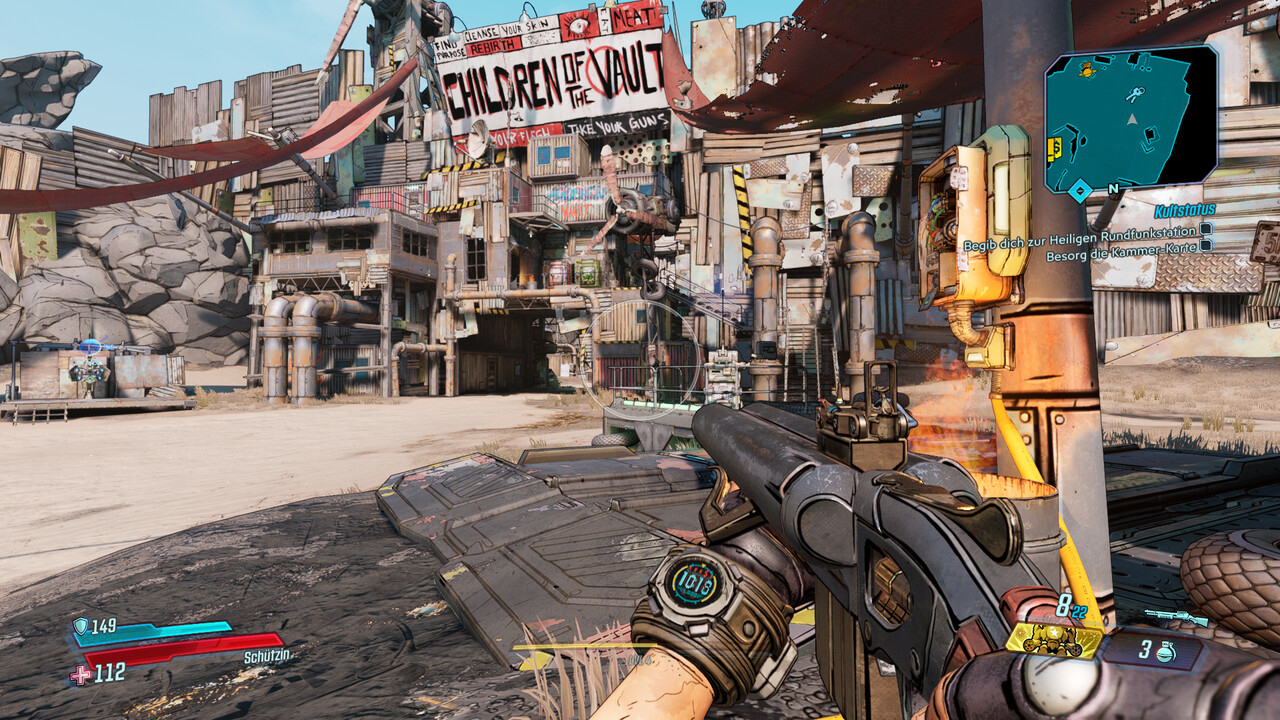– The loot shooter Borderlands 3 is based on the predecessor in terms of graphic style, but looks much better with Unreal Engine 4. This increases the demands on the computer. At the start there are still some problems with both DirectX 11 and DirectX 12 that should be fixed quickly.
Borderlands, the well-known and popular loot shooter series, started the third round today. After players had been able to play the original Borderlands in the GOTY version with improved graphics again since spring, it is now the right Borderlands 3. The game was again developed by Gearbox, who have already launched Borderlands, Borderlands 2 and Borderlands: The Pre-Sequel.
In initial tests with a focus on gameplay, Borderlands 3 almost did very well. One question that has so far remained unanswered was that of the technology of the PC version. It is clarified in this article. As usual, in addition to the peculiarities of the PC version, the focus is on performance and a closer look at the duel DirectX 11 against DirectX 12.
Cell shading graphics with Unreal Engine 4
After the three previous Borderlands parts have relied on Unreal Engine 3, Borderlands 3 is based on the current Unreal Engine 4. However, the cell shading style has remained the same and you immediately feel at home in the game again the graphics are very similar to those of the predecessor. However, everything looks a little better, even if Borderlands 3 – in the tradition of the series – never ignites graphic fireworks. The title doesn’t want that either. The lighting, the animations and the particle effects know without liking, the graphics quality is on a decent level that matches the game.
With AMD to DirectX 12
The PC version of Borderlands 3 was developed in collaboration with AMD. So it comes as no surprise that the Unreal Engine 4 suddenly supports the low-level API DirectX 12 again after Gears 5 (test). In addition, AMD’s focus filter FidelityFX has found its way into the game, which can be activated in the graphics menu. Borderlands 3 supports Async Compute.
Borderlands 3 offers a very extensive graphics menu on the PC with many setting options. There are also some other features. In addition, there are sometimes quite extensive explanations of the individual points, but screenshots of the options are missing.
The menu includes a possibility for downsampling and upsampling. The native resolution can also be reduced to 50 or 75 percent, if desired, to increase performance at the expense of image quality. It works the other way around, then the resolution is increased to 125, 150, 175 or 200 percent.
There is also an extensive FPS limiter. As with many Unreal Engine games, it also offers dynamic resolution that keeps the frame rate between 22 and 62 FPS. There are also classic FPS limits at 30 FPS, 60 FPS and 120 FPS. Alternatively, the limit can also be set manually in increments of 1 between 30 FPS and 300 FPS.
In Borderlands 3, the frame rate can be displayed via overlay. If that’s not enough, you can also display the time, how long the graphics card and how long it took the processor to complete a frame. A bottle neck can be easily recognized.
Almost all options are adopted immediately
Apart from the choice of API, DirectX 11 and DirectX 12 are available, all graphics options can be set “on-the-fly” without a restart. It only takes roughly a second for all changes to take effect. The game also offers an integrated benchmark as a flyby sequence to measure the expected performance.
Many presets and AMDs FidelityFX
Borderlands 3 offers six different graphics presets. There are the settings “Very Low”, “Low”, “Medium”, “High”, “Ultra” and “Badass”, which is the maximum configurable picture quality.

You have to look for the optical difference between badass and ultra with a magnifying glass. At a higher distance, a few objects have more details with the highest setting, but otherwise the editors noticed no difference. However, the situation is different at the high level, because some objects suddenly no longer cast shadows there. In addition, the LOD becomes more aggressive and more objects suddenly appear out of nowhere in front of the player. Up to and including high, the good graphics of Borderlands 3 are retained.
From the medium level onwards, the quality then drops noticeably. Primarily because the LOD now constantly pops up objects in front of the player, which is annoying – but you can hardly see them on screenshots. Apart from that, shadows and surrounding cover are further reduced and the detail density itself is reduced. From low, the game is simply not nice to look at. This setting and even more so very low should only be used if there is no other way in terms of performance.
Presets – 2,560 × 1,440
- Very-Low-Preset
- Low-Preset
- Central Preset
- High-Preset
- Ultra-Preset
- Badass preset
The three highest and most recommendable graphics presets, however, only bring small leaps in performance. If you switch from Badass to Ultra, you gain eight percent of images per second on a GeForce RTX 2070, and ten percent on a Radeon RX 5700 XT. The high preset then brings another 15 percent each. A really big leap comes with the only moderately beautiful middle preset, which increases the speed by just over 50 percent. Low and very low then bring a good boost again. The tuning potential without large optical losses is therefore low in Borderlands 3.
2 × anti-aliasing with a clear choice
Borderlands 3 offers FXAA and a temporal variant as anti-aliasing. The latter is clearly preferable because FXAA visibly lacks the temporal component and therefore many objects are not smoothed in the first place. Temporal anti-aliasing produces a blur in low resolutions like Full HD, but this is preferable to the persistent flicker. Anti-aliasing hardly costs any performance in Borderlands 3.
FidelityFX makes everything a little sharper
Borderlands 3 is delivered with AMD’s FidelityFX, which can be switched on and off in the menu. In the game, FidelityFX runs out of a sharpness filter, which can be used on AMD and Nvidia graphics cards. FidelityFX does not have a huge, but visible impact in Borderlands 3. The following applies: the lower the resolution, the more the feature brings. But even in Ultra HD, the graphics can still benefit minimally.

With FidelityFX, many areas of the image are displayed a little sharper and therefore more detailed. The more details you can see in a scene, the more FidelityFX brings. The feature is particularly useful because it can remove the blurring of temporal anti-aliasing. More sharpness automatically means a little more image unrest, whereby in Borderlands 3 you have to look closely, which flickers more with activated FidelityFX than without.
AMD FidelityFX – 3,840 × 2,160
- FidelityFX Off
- FidelityFX on
Since it is a post-processing effect, FidelityFX hardly costs any performance regardless of the graphics card. The Radeon RX 5700 XT is only one percent slower, the GeForce RTX 2070 by two percent. Therefore it is recommended to use the feature in Borderlands 3.
Usable textures without highlights
Borderlands 3 offers decent textures without highlights. If you get too close, you can quickly see that an even higher texture resolution would not have hurt. However, this is not noticeable when playing games – at least for most surfaces. A few exceptions confirm the rule.
The need for storage is limited. For the most beautiful textures, 4 GB is sufficient in Full HD and a graphics card with 6 GB is sufficient in Ultra HD. With DirectX 12 the memory hunger is higher. The graphics card should have at least 6 GB there, 8 GB should be available for high resolutions.
On the next page: DX11 vs. DX12, GPU benchmarks, CPU benchmarks, frame times and conclusion
















